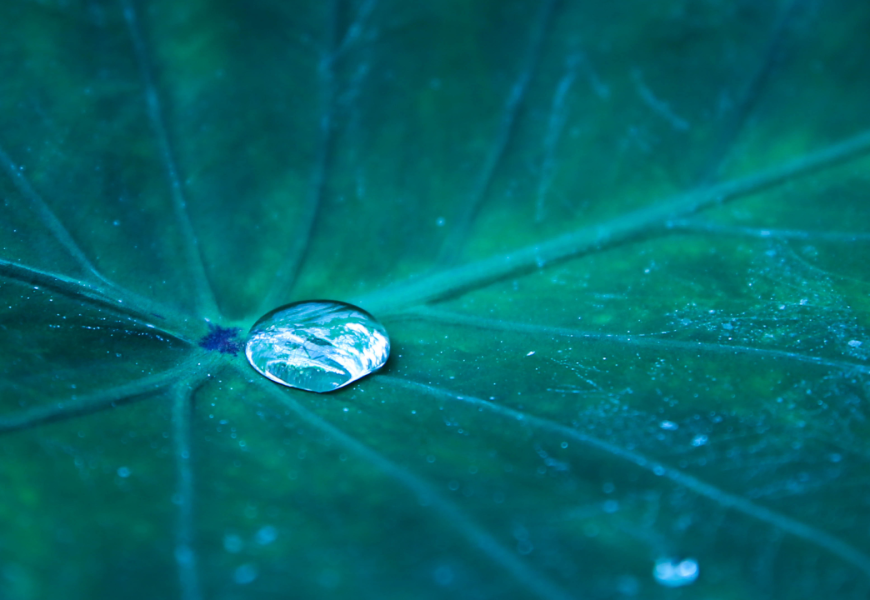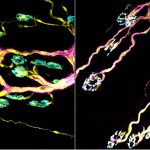87 years ago, the Telmatobius halli species, whose definitive rediscovery was announced recently, was lost track of. Two studies published in 2021 outline the true location of this species, which had been absent in Chile since 1935. The achievement is shared by Professor Claudio Correa Ph.D. from the Department of Zoology, and the German self-taught researcher, Jakob von Tschirnhaus.
In 2018, Pablo Fibla et al. published the rediscovery of Telmatobius halli in the Zootaxa journal (“Where is the enigmatic Telmatobius halli Noble 1938? Rediscovery and clarification of a frog
species not seen for 80 years”), whereby they apparently solved one of the longest-lasting enigmas of Chilean herpetology. However, César Cuevas et al. published in 2020, in the same journal, a second rediscovery of the species (“Rediscovery of the enigmatic Andean frog Telmatobius halli Noble (Anura: Telmatobiidae), redescription of the tadpole and comments on new adult’s characters, type locality and conservation status”), but in a different place to the one
identified by Fibla et al.
This situation caught the attention of the Zoology Department Professor and member of UdeC’s Herpetozoo Conservation and Systematic Laboratory, Claudia Correa Ph.D., who analyzed both
publications and continued to ask questions about the exact identity and geographic location of the missing frog since the two published rediscoveries were incompatible.
In a scientific congress in 2020, Dr. Correa set forth another hypothesis about the lost species, Telmatobius halli, a frog collected for the first time in 1935 and described in 1929, found in a hot spring at the top of the Loa River, in the Antofagasta region.
The public presentation of his bibliographical research echoed with a young self-taught German researcher, Jakob von Tschirnhaus, who after hearing Dr. Correa, contacted him to provide his
onsite research data. In fact, von Tschirnhaus had independently reached the same conclusion about the location of the species presented by the UdeC researcher at the scientific congress.
In this way, both began to collaborate and concur on their conclusions, contributing new and valuable information to disclose the exact location of a species that had been absent for over eight decades and that, due to its restricted spread, was currently at risk of extinction.
The mysterious missing frog is found in Miño, an abandoned mine located at the top of the Loa River. The geographic accuracy of the finding, and the physical confirmation of Dr. Correa’s hypothesis, were possible thanks to Jakob von Tschirnhaus heading to the site. He confirmed that this was the place where the species was originally collected, found adult frogs and tadpoles attributable to the species, and took samples of tadpole tissues for genetic analysis.
Thanks to this, Dr. Claudio Correa could perform molecular phylogenetic analysis to establish the relationship of the original T. halli population with other species in the area. This analysis, made at UdeC’s Herpetology Conservation and Systematic Laboratory, allowed establishing that the
population found by von Tschirnhaus at Miño is genetically indistinguishable from closer species (Telmatobius dankoi and T. vilamensis). Using this evidence, alongside a detailed revision of the morphological information, von Tschirnhaus and Correa demonstrated that these three species are one and the same and should be called T. halli. They also suggested that a suitable common name for the species would be “Loa Frog”. Curiously, both researchers had reached the same hypothesis about the location of the species before meeting one another, and the mutual collaboration allowed bringing the mystery of the missing frog to an end.
“The Loa Frog”
Telmatobius halli is an endemic frog, which as far as these scientists know, is currently found in three locations: in Miño (at the top of the Loa River); at Las Cascadas (close to Calama); and on the
Vilama River (close to San Pedro de Atacama). However, according to the recent comments of Dr. Correa and other researchers, it seems to have disappeared from the last two.
“This is a species that measures between 5 and 6 centimeters as an adult, it is dark brown with clearer patches. It has a flattened snout and is a completely aquatic amphibian, with very developed interdigital membrane on its rear feet”, Dr. Correa explains. Just like with other
Telmatobius in Chile, “It has a soft flat and somewhat soapy skin, and its forward-facing eyes bulge out upwards”, he added. Its tadpoles are enormous. In fact, they are bigger than adult frogs.
Despite all that has been established regarding this “Loa Frog”, there is so much to discover, like for example, getting to know who their predators are, when they reproduce, and the most important aspect for their conservation, if they are in other places along the Loa River.
The two publications that definitively cleared up the mystery are:
- Correa (2021) A solution to the enigma of the type locality of Telmatobius halli Noble, 1938 (Anura, Telmatobiidae), a frog lost for 86 years (https://zookeys.pensoft.net/article/67904/)
- von Tschirnhaus & Correa (2021) The definitive rediscovery of Telmatobius halli (Anura, Telmatobiidae) at its historic type locality and its synonymy with T. dankoi and T. vilamensis
(https://zookeys.pensoft.net/article/69036/)
For more information: Dr. Claudio Correa: ccorreaq@udec.cl and Jakob von Tschirnhaus: pilladken@gmail.com
Last modified: 29 de agosto de 2025






